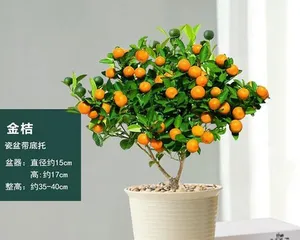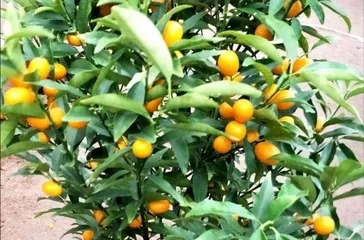Oranges are a common fruit widely sold in the market. Orange trees are also very worthwhile plants to grow, not only for ornamental purposes but also for harvesting abundant fruit. However, to successfully grow an orange tree, it is necessary to understand its cultivation techniques and precautions.

Tips for Selecting an Orange Tree
A good orange tree is crucial. To select a healthy orange tree, you can start from the following aspects. First, choose a seedling with good growth. Second, check if the branches are bent or twisted, as this will affect growth and harvesting. Finally, choose a potted seedling, as this type of seedling is easy to transplant and manage.
Soil Preparation and Cutting Methods
Soil preparation is the first step in planting an orange tree. You should choose fertile soil and add bone meal and organic fertilizer in a certain proportion. Cuttings are a propagation method that requires pruning with sharp scissors and inserting them into new soil while maintaining temperature and humidity.

Watering Methods for Orange Trees
Orange trees need to maintain appropriate moisture, but too much water can damage the roots, affecting the growth of the entire tree. Therefore, check the soil's moisture before each watering. Generally, watering once a week is sufficient.
Fertilization Techniques for Orange Trees
Orange trees require sufficient nutrients and therefore need frequent fertilization. Generally, fertilization is needed in spring and autumn each year. Compound fertilizer is suitable for spring, and organic fertilizer is suitable for autumn, which can effectively increase fruit yield.
Pruning Methods for Orange Trees
The best time to prune an orange tree is generally in spring or summer. Pruning can promote the growth of branches and help the orange tree form a more reasonable canopy. Before pruning, you need to clean the main trunk and side branches of the canopy first.

Pest and Disease Control for Orange Trees
Orange trees are susceptible to various pests and diseases, such as aphids, mites, and powdery mildew. To effectively control these pests and diseases, you can spray pesticides timely and perform daily cleaning and disinfection.
Shading and Insulation Methods for Orange Trees
Orange trees are plants that love sunlight, but they can be affected by sun exposure during high summer temperatures. Therefore, shading treatment is necessary, and you can use sunshade nets, straw curtains, or other methods to prevent the orange tree from overheating. At the same time, insulation treatment is also needed in winter, and you can use burlap, straw, or other materials to maintain the temperature.
Transplanting Methods for Orange Trees
Orange trees may need to be transplanted during their growth process, and it is important to choose the right time and method for this. Generally, spring and autumn are more suitable times for transplanting. Before transplanting, you need to prune the main trunk and side branches of the canopy clean and pay attention to the soil moisture.
Harvesting Time for Orange Trees
The harvesting time for orange tree fruit is generally in winter, after the fruit has completely turned yellow. At this time, the fruit has a higher sugar content and a better taste.
Storage Methods for Oranges
If you have a large harvest of oranges at once, you can use cold storage for preservation. During storage, it is important to maintain proper temperature and humidity to prevent damage to the fruit.
Flowering Period and Flower Type of Orange Trees
The flowering period of orange trees is generally in spring or summer, and the flowers are white or pink, very beautiful.
Ornamental Value of Orange Trees
In addition to the abundant fruit yield, orange trees also have high ornamental value. Their unique canopy shape and beautiful flowers can provide a visual enjoyment.
Application Value of Orange Trees
Oranges can not only be eaten directly but also used to make juice, drinks, and other products. In addition, the peel and leaves of oranges also have certain medicinal value.
Cultural Significance of Orange Trees
In Chinese culture, oranges are a very important symbol. In traditional culture, oranges are considered a symbol of good luck and fortune and are often given as gifts to friends and relatives for blessings and celebrations.
Conclusion
Caring for an orange tree requires certain skills and experience, but as long as you master the correct cultivation methods, you can reap a bountiful harvest and a beautiful landscape. It is hoped that the cultivation techniques and precautions for orange trees introduced in this article will be helpful to all enthusiasts.